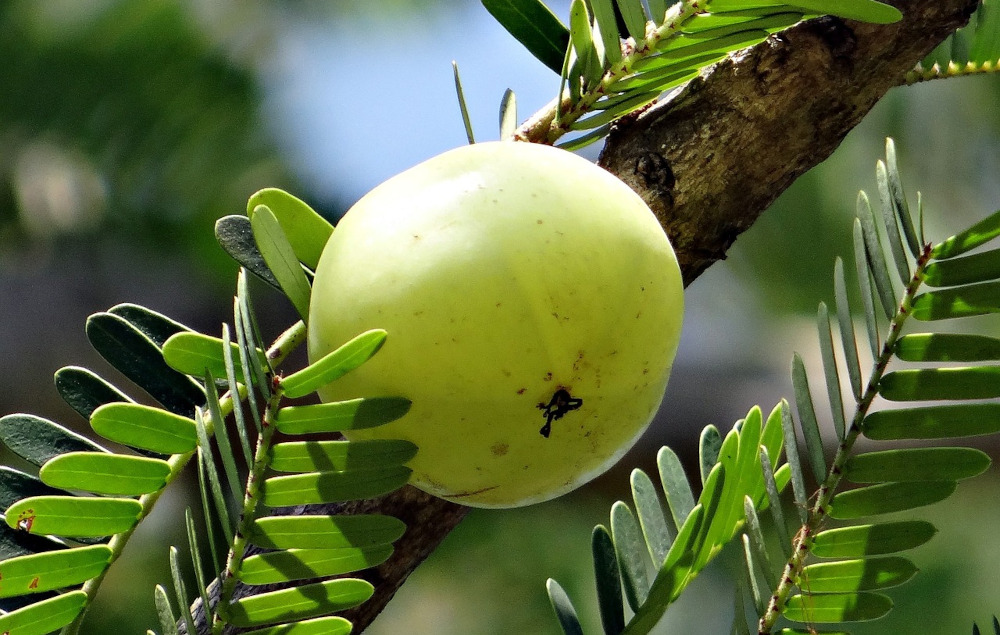A Natural Diabetes Treatment That Works!

Scientists have verified an effective treatment for diabetes, and it’s not some new-fangled, FDA approved until it kills more people than they can ignore, pharmaceutical drug. No. This safe and effective treatment for diabetes is called Nepalese/Indian gooseberry, known in Ayurvedic medicine as Amla (Emblica Officinalis).
Amla is an edible fruit grown on a deciduous tree of the same name. It’s used as both a food and medicine in India and other parts of Southeast Asia, where the traditional healing system called ‘Ayurveda’ was born, approximately 3,500 years ago. For those who have been seeking an alternative to diabetes medications and their side-effects, this may be the treatment solution you’ve been searching for.
Amla Versus Diabetes Drugs
A 2011 study, published in the International Journal of Food Sciences and Nutrition, confirms what Ayurvedic practitioners have known for ages: Amla normalizes blood glucose (sugar) levels.
In the study, powdered Amla was given to both type 2 diabetics and non-diabetics and their fasting blood glucose levels were measured and compared at the 3-week mark. Fasting blood glucose levels are usually measured after 8 or more hours without food or liquids, with the exception of water. For the purposes of this study, the researchers measured blood glucose levels only 2 hours after meals.
The study participants were separated into groups – diabetics and non-diabetics, who were then divided into sub-groups by the dosage of powdered Amla they would be given daily. The dosages were measured by weight, in grams. (Note: Each gram of Amla powder is equivalent to ¼ measuring teaspoon.)
- The 3 grams group, both with and without diabetes, not only had normal fasting blood glucose levels by day 21, but their levels were significantly lower than those of diabetes patients taking the leading diabetes drug on the market – Glyburide (aka Diabeta and Micronase).
- The 2 grams group, both with and without diabetes, also had normal fasting blood glucose levels, but their levels were slightly higher than those of patients taking the diabetes drug.
- The 1 gram group, both with and without diabetes, also had normal fasting blood glucose levels, but their levels were significantly higher than those on the diabetes drug.
The study also showed that Amla significantly lowered total cholesterol and triglycerides in both normal and diabetic volunteers. All participants in the 2 and 3-gram groups improved their high-density lipoprotein-cholesterol (HDL / “good” cholesterol) levels while lowering their low-density lipoprotein-cholesterol (LDL / “bad” cholesterol) levels. This is important to note because diabetes tends to lower “good” cholesterol levels and raise triglycerides and “bad” cholesterol levels, which increases the risk of heart disease and stroke in diabetes sufferers. This condition is called diabetic dyslipidemia, which means your lipid profile is going in the wrong direction. And even though the 1 gram group didn’t see a significant improvement in their lipid profile, their blood glucose levels were still normalized, which is quite a feat for such a small amount of fruit. 1 gram of powdered Amla is less than one gooseberry!
Comparing side-effects
Naturalness is not the only consideration. Glyburide has a plethora of side-effects, including, but not limited to...- dizziness
- difficulty swallowing
- hives
- shortness of breath
- tightness in the chest
- unusual tiredness or weakness
- headaches
- diarrhea
- nausea
- vomiting of food
- vomiting of blood
This isn’t even half of the “known” side-effects for glyburide and similar drugs.
Amla, on the other hand, has no known side-effects and the FDA reports that there is no known drug interaction between Glyburide and Amla. As I said earlier, Amla has been eaten and used as medicine for ages and, so far, no negative side-effects have been discovered in all this time.
Comparing costs
Whether you choose Amla or drug treatment, price is not an issue. Glyburide is pretty cheap these days, especially if you buy it at a chain pharmacy like Walmart, where a month supply is $4-8, depending on the dose. Amla is even more inexpensive, especially if you purchase it from an Indian grocery store.
Let’s face it, the lack of side effects are what make Amla the obvious choice to try if you have not yet begun taking a diabetes drug. If you wish to switch from a drug to Amla, it is critical that you consult your doctor first. Some pharmaceutical drugs require a slow weaning process, and you’ll need your doctor’s assistance and monitoring for that.
The Amla study published by the International Journal of Food Sciences and Nutrition is just one study, however, it validates previous Amla studies as well as centuries worth of anecdotal evidence and first-person testimonials. In short, when it comes to successfully treating diabetes without suffering any negative side-effects, Amla works!
If you want to be cured of diabetes, however, you will need to make a commitment to changing your lifestyle, particularly what you eat. This will be much harder for some than for others. As the saying goes, “Old habits die hard.” But remember that Amla is a fruit, and if one fruit can outperform the most effective diabetes drug on the market, in such small amounts, think what adopting a plant-based diet could do for your overall health and well-being? THAT is truly the cure!
Love what you’re reading? Don’t miss out on future articles! Subscribe for updates on our latest posts and our bi-monthly newsletter.
Sign up now—no spam, just good vibes and holistic health insights delivered straight to your inbox!
Akhtar MS, Ramzan A, et al. “Effect of Amla fruit (Emblica officinalis Gaertn.) on blood glucose and lipid profile of normal subjects and type 2 diabetic patients”. International Journal of Food Sciences and Nutrition, September 2011. Web. September 2015
Caldecott, Todd, Tierra, Michael. Ayurveda: The Divine Science of Life, 2006. Print. August 2014
Author unknown. “Glyburide (Oral Route)”. MayoClinic.org, n.d.. Web. September 2014
